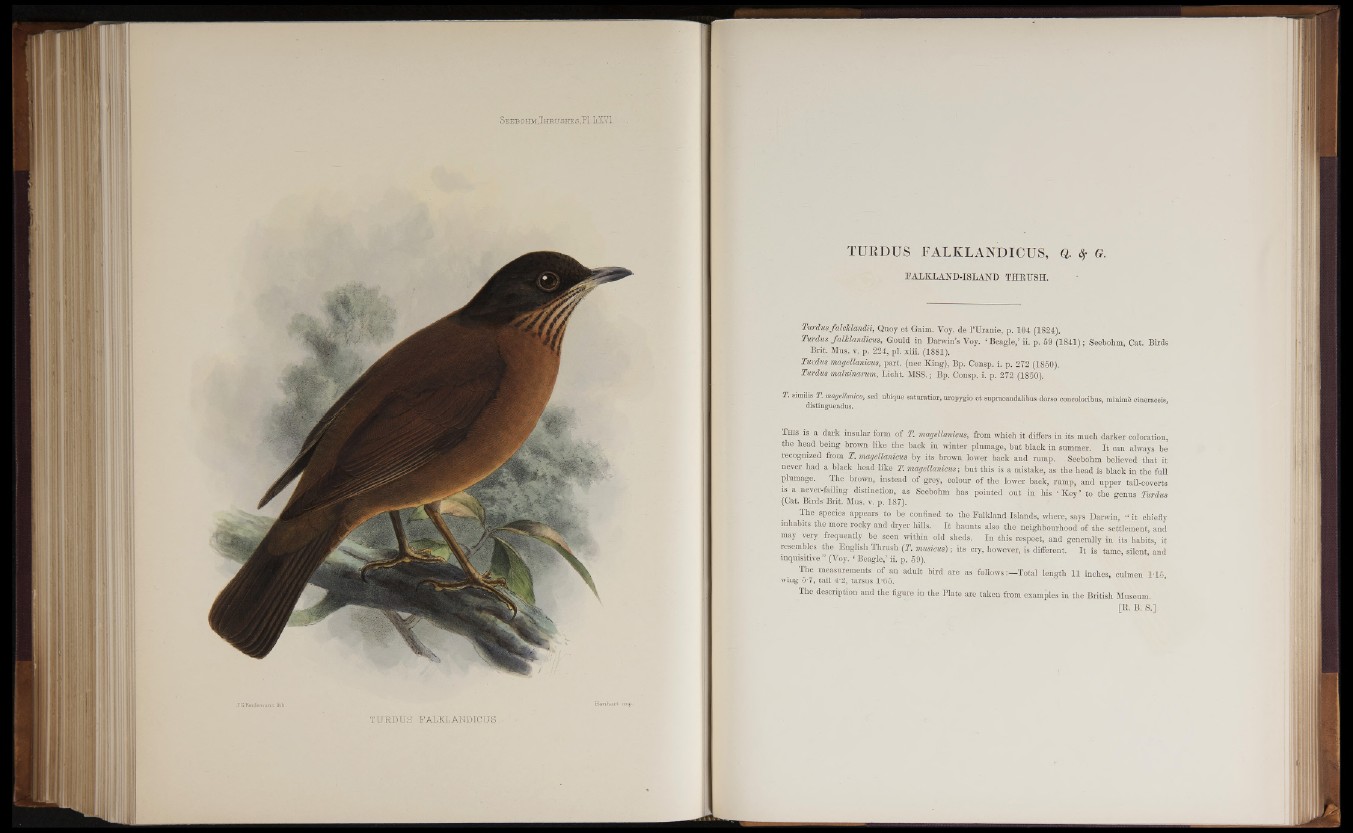
TURDUS FALKLANDICUS, Q. % G.
FALKT.A ND-ISLAND THRUSH.
Turdus falcklandii, Quoy et Gaiin. Voy. de l ’Uranie, p. 104 (1824).
Turdus falklandicus, Gould in Darwin’s Voy. ‘Beagle,’ ii. p. 59 (1841) ; Seebohm, Cat. Birds
Brit. Mus. t . p. 224, pl. xiii. (1881).
Tur.dus magellanicus, part, (nec King), Bp. Consp. i. p. 272 (1850).
Turdus maluinarvm, Licht. MSS. ; Bp. Consp. i. p. 272 (1850).
T. similis T. magellanico, sed ubique saturatior, uropygio et snpracaudalibus dorso concoloribus, minime cineraceis,
distinguendus.
This is a dark insular form of T. magellanicus, from which it differs in its much darker coloration,
the head being brown like the back in winter plumage, but black in summer It can always be
recognized from T. magellanicus by its brown lower back and rump. Seebohm believed that it
never had a black head like 21 magellanicus ; but this is a mistake, as the head is black in the full
plumage. The brown, instead of grey, colour of the lower back, rump, and upper tail-coverts
is a .never-failing distinction, as Seebohm has pointed out in his ‘ Key ’ to the genus Turdus
(Cat. Birds'Brit. Mus. v. p. 187).
The species appears to be confined to the Falkland Islands, where, says Darwin, “ it chiefly
inhabits the more rocky and dryer hills. It haunts also the neighbourhood of the settlement, and
may very frequently be seen within old sheds. In this respect, and generally in its habits, it
resembles the English Thrush (21 musicus) ; its cry, however, is different. It is tame, silent, and
inquisitive ” (Voy. * Beagle,' ii. p. 59).
The measurements of an adult bird are as follows Total length 11 inches, culmen 1-15
wing 5-7, tail 4'2, tarsus 1'65.-
The description and the figure in the Plate are taken from examples in the British Museum.
[R. B. S .|. "